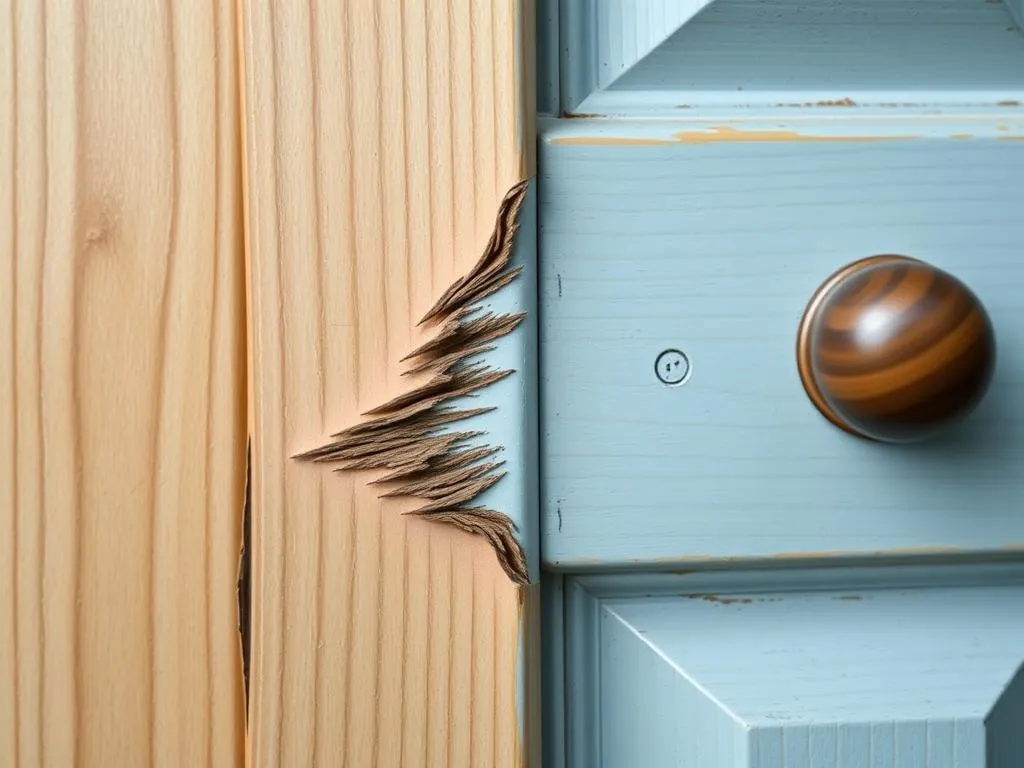
Introduction
If you’re a proud dog owner, you might already be familiar with the unfortunate reality of dog scratches on wood doors. Whether from playful nudges or excited greetings, these scratches can tarnish the beauty of your wooden doors and affect the overall aesthetic of your home. Maintaining your home’s appearance is important not only for your enjoyment but also for preserving its value.
In this comprehensive guide, we will explore the various types of scratches, assess the damage, and provide step-by-step instructions on how to fix a dog scratch on a wood door. We’ll also discuss preventive measures to help you avoid future scratches. Let’s dive in!
Understanding the Damage
Types of Scratches
When it comes to dog scratches on wood doors, understanding the type of damage is crucial for choosing the right repair method:
- Light surface scratches: These are minor blemishes that can often be buffed out or touched up with a matching stain.
- Deep gouges: More severe scratches that penetrate the wood’s surface and may require filling with wood putty or filler.
- Water or moisture damage: Sometimes, scratches can lead to moisture getting under the finish, causing the wood to swell or warp if not addressed promptly.
Impact of Dog Scratches
Ignoring dog scratches on wood doors can lead to several issues:
- Visual appeal: Scratches can detract from the beauty of your home, making it feel worn and unkempt.
- Structural integrity of the door: Deep scratches can compromise the wood, leading to more serious damage over time.
- Potential for further damage: Left untreated, scratches can worsen, resulting in costly repairs or replacements.
Assessing the Damage
Inspecting the Scratch
Before proceeding with repairs, it’s important to assess the damage:
- Identifying the depth and severity of the scratch: Light scratches may only require buffing, while deep gouges will need more extensive work.
- Evaluating the finish of the wood door: Knowing whether your door is stained, painted, or varnished will help you choose the right repair materials.
Tools and Materials Needed
Gathering the right tools and materials will make your repair process smoother. Here’s what you’ll need:
- Sandpaper (various grits): For smoothing out scratches and preparing the surface.
- Wood filler or putty: Essential for filling deep gouges.
- Stain or paint matching the door: To restore the appearance of the wood.
- Clear coat or sealant: To protect the repaired area from future damage.
- Cleaning supplies: Soap, water, and a cloth for prepping the surface.
Repairing Light Scratches
Cleaning the Area
The first step in fixing a dog scratch on a wood door is to clean the scratched area thoroughly. Use a mixture of soap and water to remove any dirt or oils that may interfere with the repair process. Dry the area completely before proceeding.
Buffing Techniques
For light scratches, buffing can often restore the finish:
- Use a soft cloth and a quality wood polish to gently rub the scratched area. This can help blend the scratch into the surrounding wood.
- Consider using a wood scratch repair kit, which often includes products specifically designed for light scratches.
Touch-Up with Stain or Paint
After buffing, you may need to apply a touch-up stain or paint:
- Select a stain or paint that closely matches your door’s existing color. Apply it with a small brush or cloth, blending it into the surrounding area.
- Allow it to dry completely, and if necessary, apply a second coat for a more uniform appearance.
Repairing Deep Scratches
Filling the Scratch
For deeper scratches, follow these steps:
- Choose the right wood filler or putty that matches your door type. Apply it directly into the gouge using a putty knife, ensuring it fills the scratch completely.
- Smooth the surface level with the surrounding wood and allow it to dry according to the manufacturer’s instructions.
Sanding the Filled Area
Once the filler has dried, it’s time to sand:
- Use fine-grit sandpaper to gently sand the filled area until it is flush with the rest of the door. Be careful not to sand too aggressively, as this can damage the surrounding wood.
- Feather the edges of the filled area to ensure a seamless transition between the filled and unfilled areas of the door.
Finishing Touches
After sanding, it’s important to complete the repair:
- Apply matching stain or paint to the filled area, following the same techniques used for light scratches.
- Once the stain or paint is dry, finish with a clear coat to provide a protective layer against future scratches and to restore the shine of the wood.
Preventive Measures
Training Tips for Dogs
Prevention is often the best strategy when it comes to dog scratches on wood doors. Here are some behavioral training tips:
- Training your dog: Teach them commands like “leave it” or “stay” to discourage them from scratching the door.
- Providing alternatives: Offer scratching posts or mats for your dog to redirect their scratching behavior away from your doors.
Protective Solutions
Consider implementing protective measures to safeguard your doors:
- Installing door guards: These can be made from materials like plastic or rubber and can help absorb impacts and prevent scratches.
- Regular maintenance: Regularly check your doors and perform touch-ups to maintain their appearance and prevent more extensive damage.
Conclusion
Addressing dog scratches on wood doors promptly is crucial for maintaining the beauty and integrity of your home. Whether you opt for a quick DIY touch-up or a more involved repair process, taking action can save you money and enhance the overall look of your space.
Remember, understanding the type of scratch, assessing the damage, and using the right tools will make the repair process much easier. With proper training and preventive measures, you can keep your doors looking great while enjoying your time with your furry friends.
By following the steps outlined in this guide, you’ll be well-equipped to tackle even the toughest scratches and maintain the aesthetics of your home. Happy repairing!









